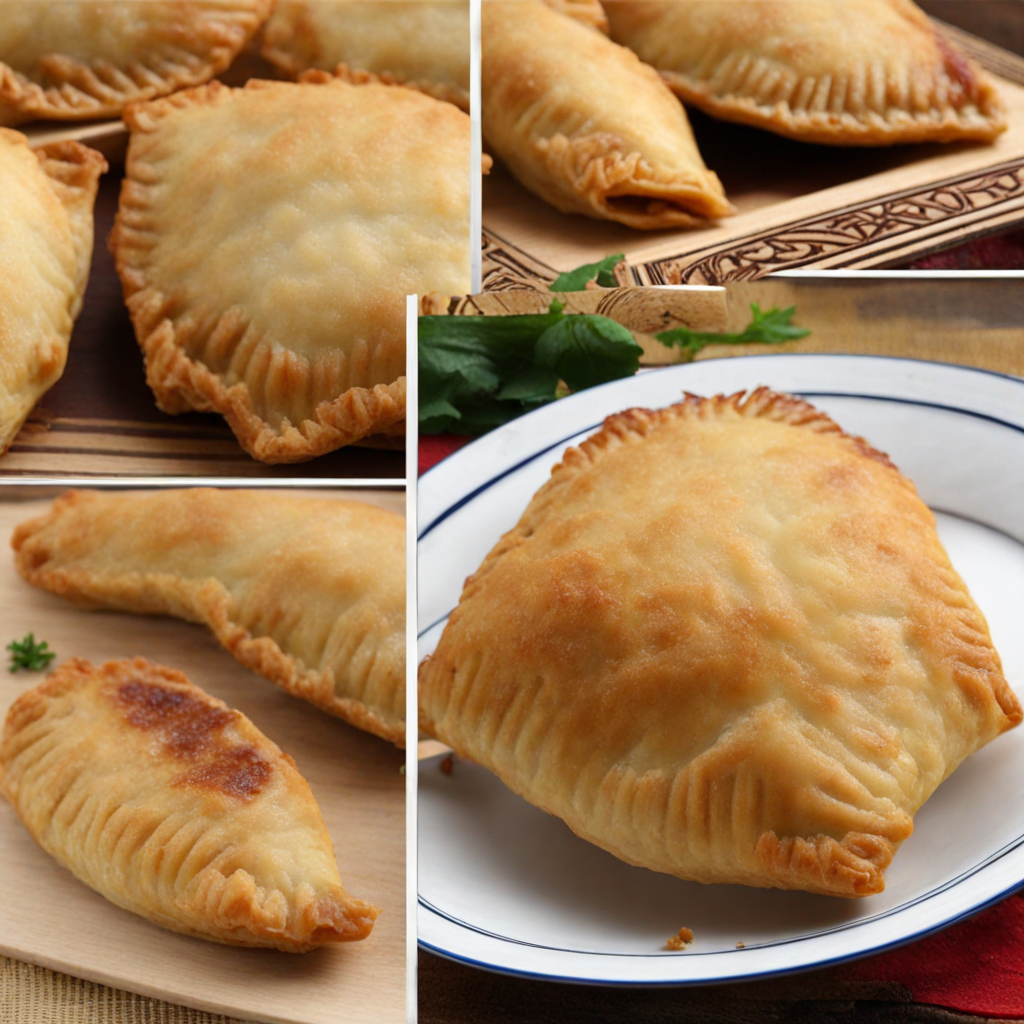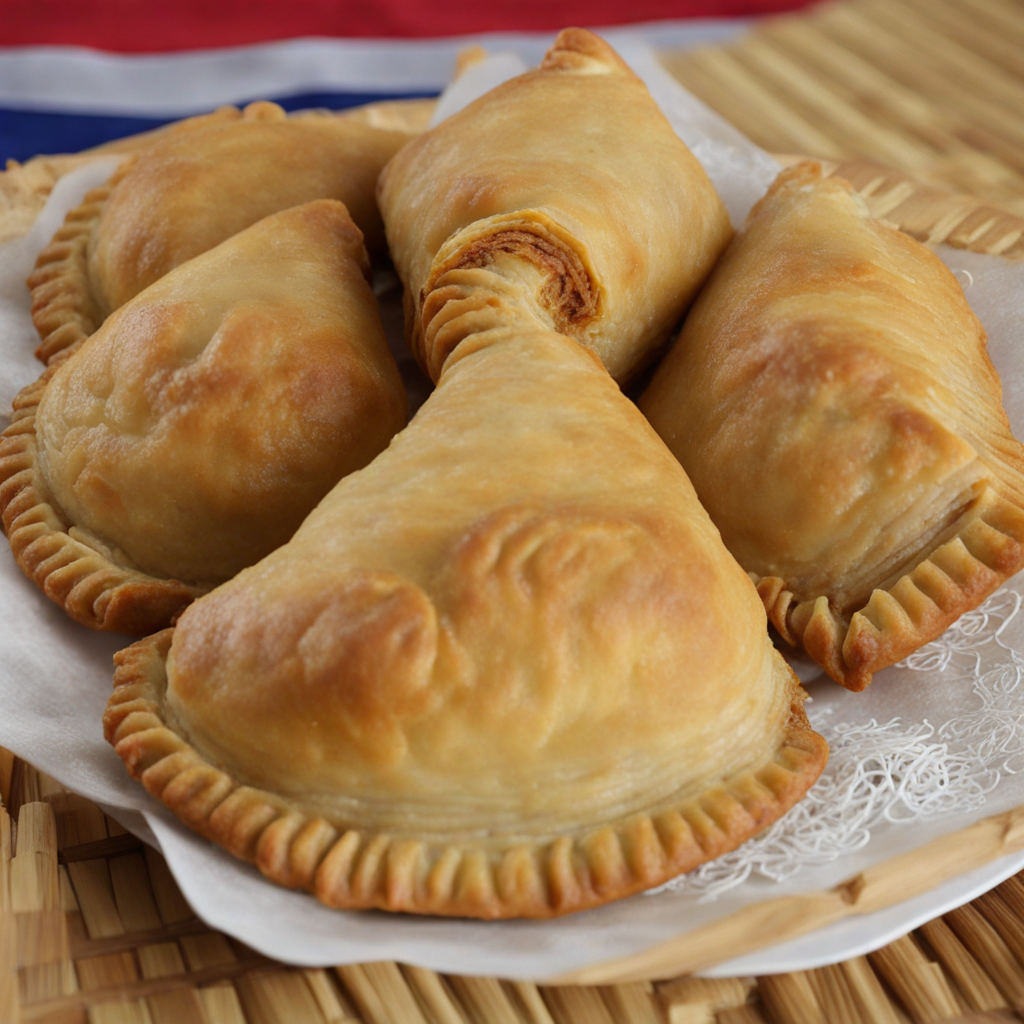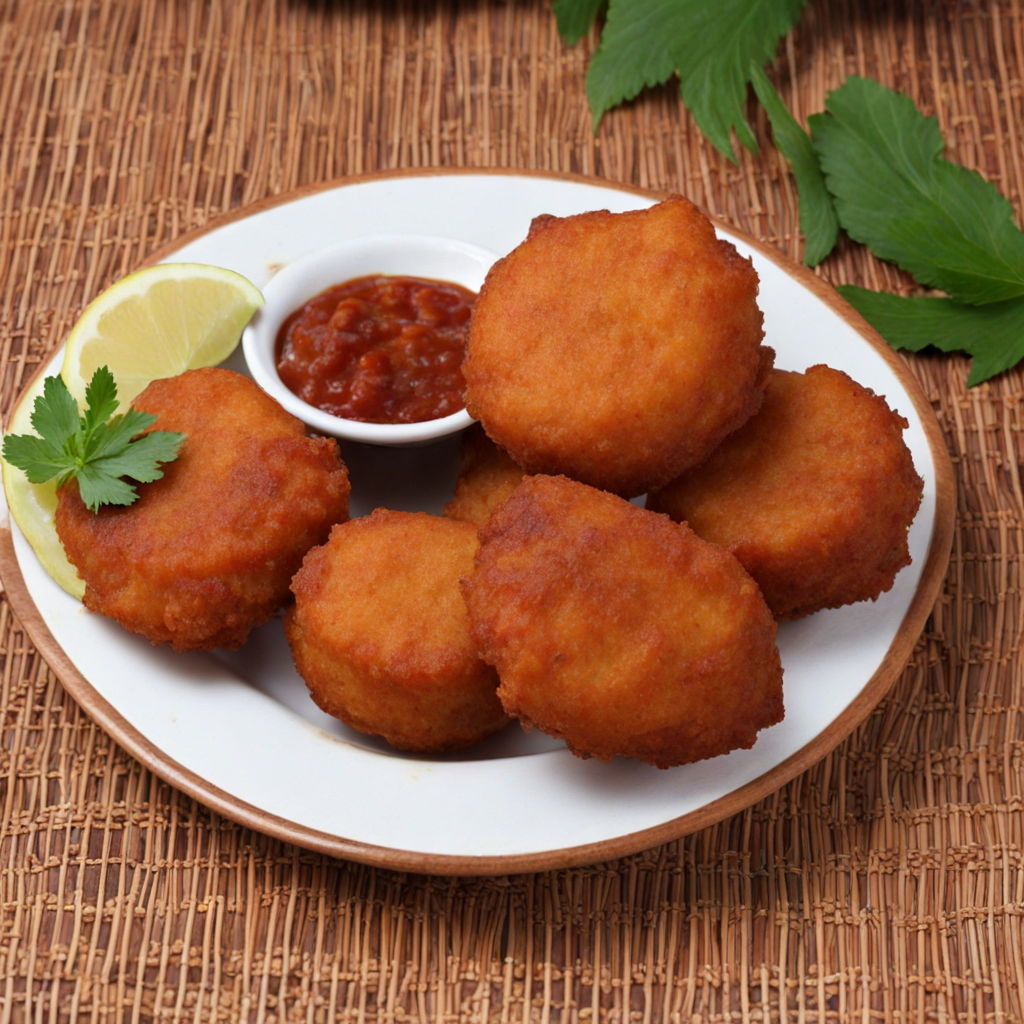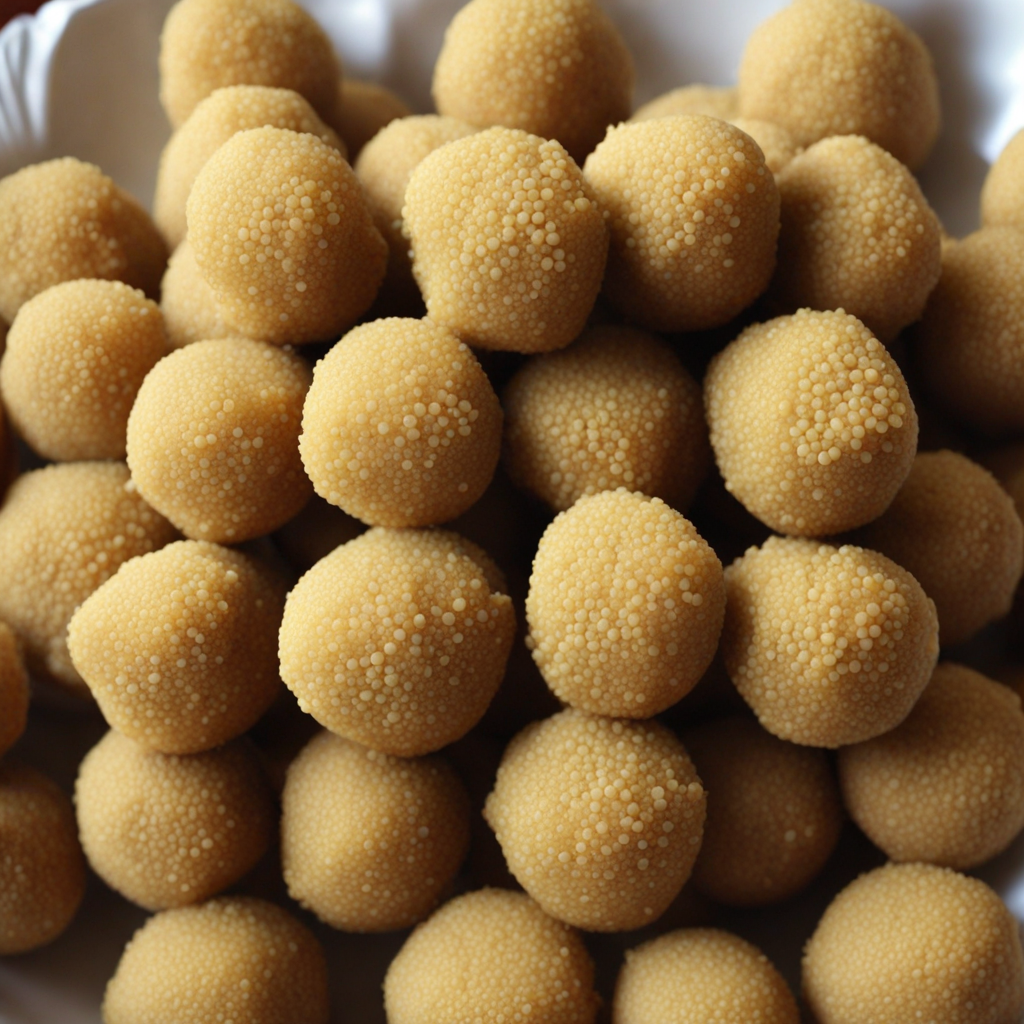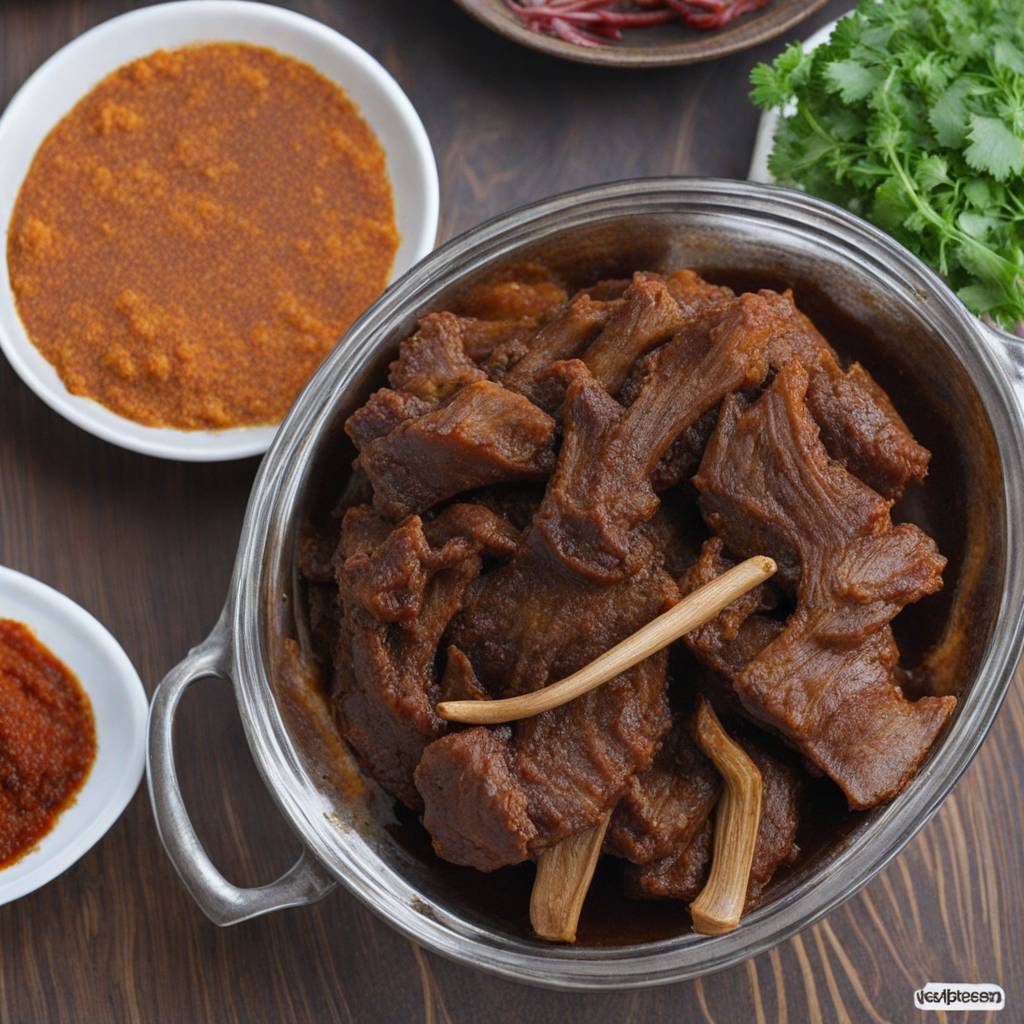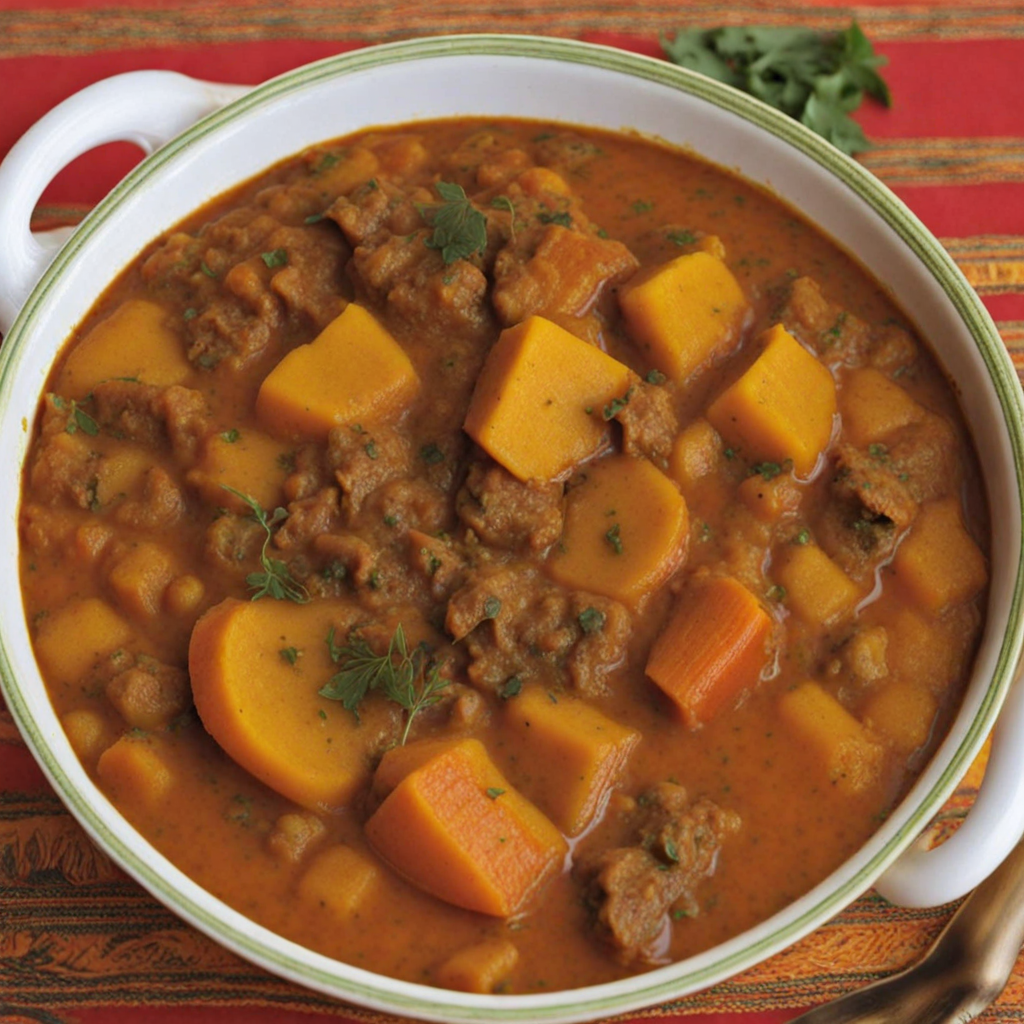Meat Pastry
Meat Pastry, a delightful dish from Niger, is a savory pastry that encapsulates the rich culinary traditions of West Africa. This dish typically consists of a flaky, golden-brown crust that encases a flavorful filling of minced meat, often sourced from beef, lamb, or chicken. The meat is seasoned with a blend of local spices, herbs, and sometimes vegetables, creating a harmonious balance of flavors that tantalizes the taste buds. The crispy exterior gives way to a moist and savory interior, making every bite a satisfying experience. What sets Meat Pastry apart is not only its enticing flavor profile but also its versatility. It can be enjoyed as a hearty snack, a light meal, or even as an appetizer at gatherings. The combination of spices used in the filling may vary from one region to another, reflecting Niger's diverse cultural influences. This adaptability allows for a personal touch—some may prefer it spiced with chili for an extra kick, while others might enjoy a milder version with aromatic herbs. In Niger, Meat Pastry is often accompanied by a side of spicy sauce or chutney, enhancing its taste and adding an additional layer of depth. This dish embodies the essence of communal dining, often shared among family and friends, creating an atmosphere of warmth and togetherness. As you bite into a freshly made Meat Pastry, you'll not only savor the unique flavors of Niger but also experience a piece of its rich cultural heritage.
How It Became This Dish
The History of Pâté in Niger Pâté, a term often associated with French cuisine, has found its way into many cultures, including that of Niger, a landlocked country in West Africa. Niger's culinary landscape is rich and diverse, shaped by its history, geography, and the intermingling of various cultures. The story of pâté in Niger is one that reflects the country's deep-rooted traditions, adaptability, and the influence of both local and colonial cuisines. #### Origins of Pâté in Niger The concept of pâté, which broadly refers to a mixture of ground meat and fat, often combined with various seasonings and encased in pastry, has ancient roots. While the term itself is derived from French culinary traditions, the idea of preserving meat dates back thousands of years. In Niger, traditional methods of food preservation have always played a vital role, especially in the Sahelian climate, where food security can be precarious. Historically, the indigenous people of Niger, including the Tuareg, Hausa, and Fulani, relied on animal husbandry and agriculture. The pastoralists, particularly the Fulani, often raised cattle, sheep, and goats. The practice of grinding up meat – a method both practical and resourceful – likely evolved as a way to use every part of the animal while ensuring food remained safe for consumption. This practice led to the creation of various meat mixtures that, while not identical to the pâté we might recognize today, laid the groundwork for its development. #### Cultural Significance In Niger, pâté is not merely a culinary dish; it embodies cultural practices and social gatherings. The preparation of pâté often involves family and community, with women traditionally taking the lead in the kitchen. The act of making pâté is a communal affair, often involving shared recipes passed down through generations, thus reinforcing family bonds and cultural identity. Pâté is commonly served during special occasions, celebrations, and religious festivities. For instance, during Eid al-Adha, when families come together to celebrate the sacrifice of a sheep or goat, pâté may be prepared as part of the feast. This dish reflects the hospitality of Nigerien culture, where sharing food symbolizes generosity and community spirit. Moreover, pâté has adapted to local tastes and ingredients. While French pâté might primarily use pork or duck, Nigerien pâté often incorporates beef, goat, or chicken, seasoned with local spices such as ginger, garlic, and chili peppers. This adaptation showcases the creativity of Niger's culinary traditions, transforming an imported concept into a distinctly local dish. #### Development Over Time The introduction of pâté into Niger's culinary scene can be traced back to the colonial period when French influence permeated West Africa. During the late 19th and early 20th centuries, as France expanded its colonial reach, culinary techniques and ingredients from France were introduced to various regions, including Niger. This period marked a significant fusion of indigenous and colonial cuisines. By the mid-20th century, as Niger gained independence in 1960, the influence of French cuisine remained evident, but there was also a resurgence of interest in traditional Nigerien foods. Chefs and home cooks began to reinterpret dishes such as pâté, incorporating local flavors and techniques while maintaining a connection to the French roots of the dish. The globalization of food culture in the late 20th and early 21st centuries further transformed the perception of pâté in Niger. With increased access to international culinary trends through media and travel, Nigerien chefs began experimenting with pâté, creating innovative versions that showcased local ingredients. Contemporary variations might include the use of millet or sorghum as a base, along with vegetables, reflecting a growing interest in health and sustainability. In urban areas, pâté has also become a popular street food item, served in small eateries and markets. This shift indicates the adaptability of traditional foods to modern lifestyles, making them accessible to a broader audience. The rise of food tourism in Niger has also highlighted pâté, attracting visitors keen to experience the authentic flavors of Nigerien cuisine. #### Conclusion Pâté in Niger is a dish steeped in history, culture, and adaptability. Its origins, while influenced by French culinary practices, are rooted in the traditional methods of meat preservation and preparation that have long been a part of Niger's culinary heritage. The evolution of pâté reflects the broader narrative of Niger's food culture—one that values community, resilience, and creativity in the face of changing times. As Niger continues to navigate the complexities of globalization and cultural exchange, pâté remains a symbol of both tradition and innovation. It serves as a reminder of how food can bridge the past and present, connecting generations and communities through shared flavors and experiences. Whether enjoyed at a festive gathering or found in a bustling market, pâté embodies the spirit of Nigerien hospitality and the rich tapestry of its culinary history.
You may like
Discover local flavors from Niger


